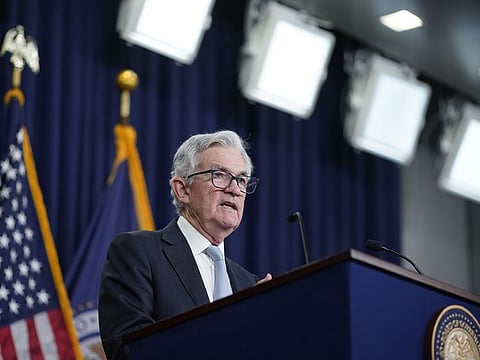US Federal Reserve keeps key interest rate unchanged for fifth straight time
Policymakers voted unanimously to keep key lending rate in the range of 4.25% to 4.50%

Dubai: The US Federal Reserve held its benchmark interest rate steady for a fifth consecutive meeting, with no guidance provided on when the next cut will be.
In its statement, the Federal Open Market Committee (FOMC) voted unanimously to keep the central bank’s key lending rate in the range of 4.25% to 4.50%, defying strong political pressure from President Donald Trump to slash borrowing costs - although divisions emerged among policymakers.
Policymakers were largely expected to hold interest rates steady on Wednesday. Analysts widely expected rates cuts to be on hold until at least September, with swaps suggesting a roughly 60% chance of a quarter-point reduction.
Economic stability
The Fed kept interest rates unchanged even as recent indicators pointed to a moderation in economic activity during the first half of the year. Much of the slowdown was attributed to trade distortions, as businesses rushed to stockpile goods ahead of broad tariffs imposed by President Trump.
"Uncertainty about the economic outlook remains elevated," the Fed said in its statement, adding that inflation also continues to run high.
The decision to hold rates came with two notable dissents from Fed Governors Christopher Waller and Michelle Bowman — both of whom had previously signaled openness to a rate cut this month. The Fed noted that they preferred a 25-basis-point reduction instead.
While some divergence within the rate-setting committee was expected, analysts highlighted that this was the first time since 1993 that two sitting governors publicly dissented on a decision.
The policy move follows a wave of economic data released this week, including a second-quarter GDP report showing the US economy returned to growth. However, much of that rebound was driven by a drop in imports, as firms front-loaded shipments earlier in the year to avoid upcoming tariffs.
Sign up for the Daily Briefing
Get the latest news and updates straight to your inbox




